In this article, we review seven types of damper blades and their purposes. Start with the damper blade primer on the MCDLG Newsstand.
Damper Blades
Dampers are made from many different components, but damper blades are the most important part. A damper without blades is just an open frame. Damper blades are adjustable metal slats installed inside the damper’s frame. These blades are designed to rotate along their axles to open or close the damper when needed. The simple action of opening and closing has a variety of uses.
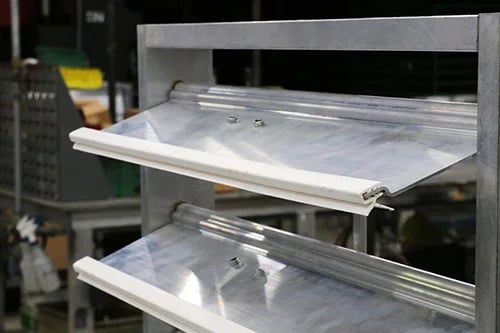
Blade type and blade action will often determine the damper’s purpose in your HVAC system. Most damper blades will rotate along a central axis. But this isn't always the case. Backdraft damper blades will rotate along an off-center axis. Some damper blades do not rotate on axles. For instance, curtain blades fall along a frame tract to close off the damper.
In this article, we will review the common types of damper blades and how they work in your damper. Let’s begin with the single-thickness blade.
Interested in dampers? Looking to meet some requirements for an HVAC project? Air Balance can help! We build dampers for HVAC, including volume control and pressure balancing dampers. Contact Air Balance today. Let us put our 50+ years of industry experience to work for you.
Single Thickness Blades
(AKA the UVU, 3V, V-Curve)
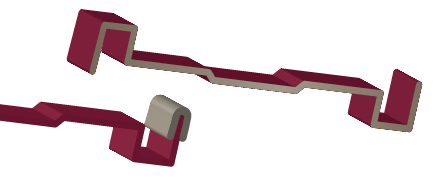
Single thickness blades are blades that sport a uniform thickness across the blade profile. Typically, these blades will have a V-bend at their center and a U-bend curve at each edge. This blade profile goes by different names in the industry – V-curve, 3V, UVU blades – but the design will be the same. The edges of the blade will curve in opposite directions, so that the blades interlock when the damper closes.
The face side curve will interlock with the rear side curve of the blade below it, while the rear side curve will interlock with the blade above. Blades seals are found along the edge of each curve. These blade seals will cover the space between the closed blades. Single thickness blades work best for applications that require a tight closing damper with minimal air leakage.
Airfoil Blades
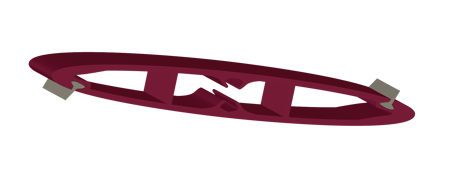
Airfoil blades consist of two flat pieces of metal fused into an “airfoil” shape. The edges of the blade are rounded to create an aerodynamic profile. The center of the airfoil is typically hollow to allow for mild warping during high velocity airflow. Add insulation material to this space to thermally insulate the damper.
Blade seals are placed in grooves along the blade profile just above the curved edge. The face side seal will point downward, and the rear side seal will face up. The blade edges will overlap when the damper closes. The seals will press against the surface of the neighboring blades to close any gaps between the blade edges.
This creates a tight seal between blades. With their smooth and aerodynamic design, airfoil blades provide the best air performance for control dampers.
Round Blades
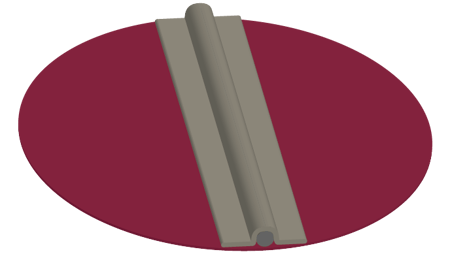
Round dampers will typically have a single round blade mounted at the center of the damper. The blade will be flat and circular, so that it covers the circular opening of the damper when closed. Round blades have a flat profile on the face side and a flat profile with a bracket on the rear side. This bracket joins the blade to the blade axle. When closing, the round blade will rotate to cover the damper opening.
Seals can be located on the blade rests in the frame or along the edges of the blade. In both cases, the seals will close the gap between blade and frame when the damper closes. Round blades provide a tight closure for round dampers, with excellent air performance and minimal air leakage.
Interested in round dampers? Learn more about them in "Round Dampers for Spiral Ductwork".
Backdraft Blades - Single Thickness and Teardrop
Backdraft dampers use a different blade design. The blade axle runs through the rear side of the blade, instead of through the blade’s center. When the axle rotates, the blade will swing up or down like a flap. This design coincides with the damper’s function: backdraft dampers allow airflow in one direction only.
If air passes the opposite way, the damper’s blade will not open. Read our article on backdraft dampers for all the details.
Single Thickness
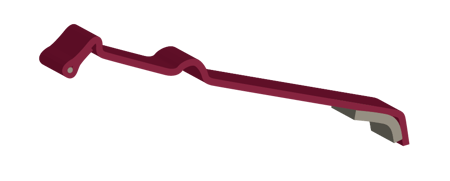
Single thickness backdraft blades will have one curve on the face side of the damper. The rear of the blade will contain the axle. The face side curve is less pronounced than the UVU blade profile. Instead of interlocking, the blades will overlap to close off the damper. The blade seal on the face side curve will rest on the blade below.
Teardrop

Teardrop blades are unique to backdraft dampers. They are flat blades that taper from the blade axle down to a rounded edge. The resulting blade profile looks like a teardrop or a pinball flipper. They are also called backdraft airfoil blades since they resemble one half of an airfoil blade.
Teardrop blades swing open when air flows through in one direction and swing closed when air flows in the opposite direction. Seals are placed along the bottom of the blade’s edge. The seal will rest on the blade below and prevent air from leaking between the blades.
Life Safety Blades - Curtain and Butterfly
Life safety dampers will use the same blade designs as control dampers. However, they are built with materials and construction methods that conform with UL standards. They will also use blade seals approved by UL.
Life safety dampers are designed to close during an emergency to slow the spread of smoke and fire. Fire dampers can be equipped with a unique blade type called a curtain blade.
Curtain Blade
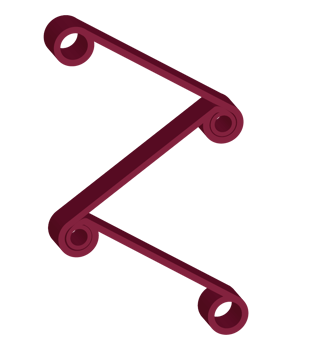
Curtain blades consist of several interlocking slats that form a curtain wall when deployed. During regular use, the curtain blade is folded into a stack at the top of the damper. The curtain blade will be held in place with a fusible link.
This link is designed to break apart at elevated temperatures (165° or 212° are common temperature ratings). When it breaks apart, the curtain will unfurl and fall over the damper opening.
The curtain blade will be spring loaded when the damper is mounted horizontally or when the damper is rated for dynamic air conditions. This spring action drives the blade curtain across the opening or down against the air current. The blade is held in place by a locking mechanism along the bottom of the damper.
Once unfurled and locked in place, an operator must manually re-open the curtain blade. The fusible link must also be replaced. Curtain blade dampers can be a cost-effective way to meet fire safety requirements.
Butterfly Blades
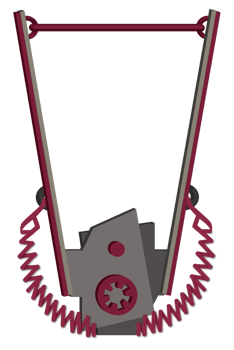
Butterfly blades are flat, spring-loaded blades that rotate along a hinge. By default, the blades are suspended over the opening by a fusible link. The open blades resemble a butterfly with its wings up.
Butterfly blades are typically installed in ceiling radiation dampers and fire dampers because they can react quickly. When the fusible link is broken, the blades swing down over the opening to close off the damper.
Butterfly blades can be insulated or uninsulated, depending on their size and intended purpose. In ceiling radiation dampers, these blades can prevent the build of excessive radiant heat.
Dampers can serve many different purposes: from directing airflow through a ductwork, to balancing air pressure, or passing air in one specific direction. They meet requirements and fulfill their intended role with the right set of blades.
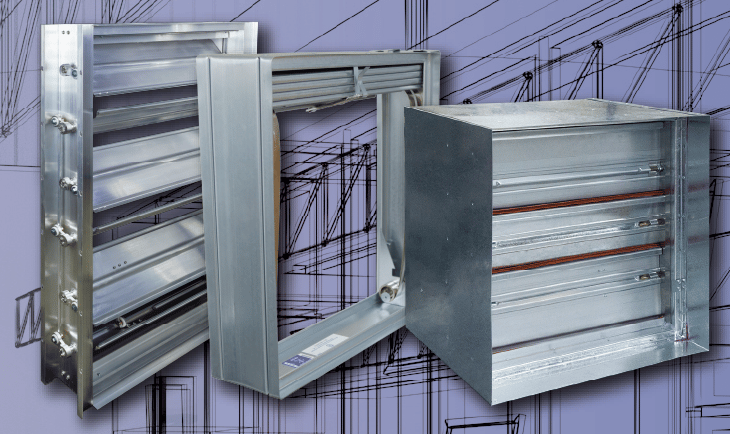
Learn more about dampers with these Newsstand articles:
- Blades with a Purpose - For Louvers and Dampers
- The Condenser - A Closer Look at Blade Seals
- Four Ways to Make Efficient Dampers
- The Condenser - A Closer Look at Pin-Lock Shafts
Which damper blades do you see most often in your line of work? Are there any blades on the list that you've never seen before? Share your thoughts in the Comments section. We want to hear from you!
MCDLG is Here to Help!
MCDLG is here to help! We can help you meet your HVAC requirements, from start to finish.
We offer continuing education courses through our Campus Portal on AEC Daily! Learn at your own pace through our online courses or schedule a webinar for any course and take a more traditional approach. Learn important HVAC principles and earn continuing education credits from a variety of institutions, including ASHRAE and AIA.
Do you have a question regarding a current or future project? MCDLG can help! Visit our contact page and leave us a message. We will gladly help you find what you need, whether it's information or custom-built louvers and dampers. Let us put our 50+ years in the industry to work for you.
We are the Mestek Commercial Damper and Louver Group, a collective of top-tier HVAC brands. Don't go alone. MCDLG is here to help!
.webp?width=91&height=70&name=MCDLG%20Logo%20(Resize).webp)
.webp)






